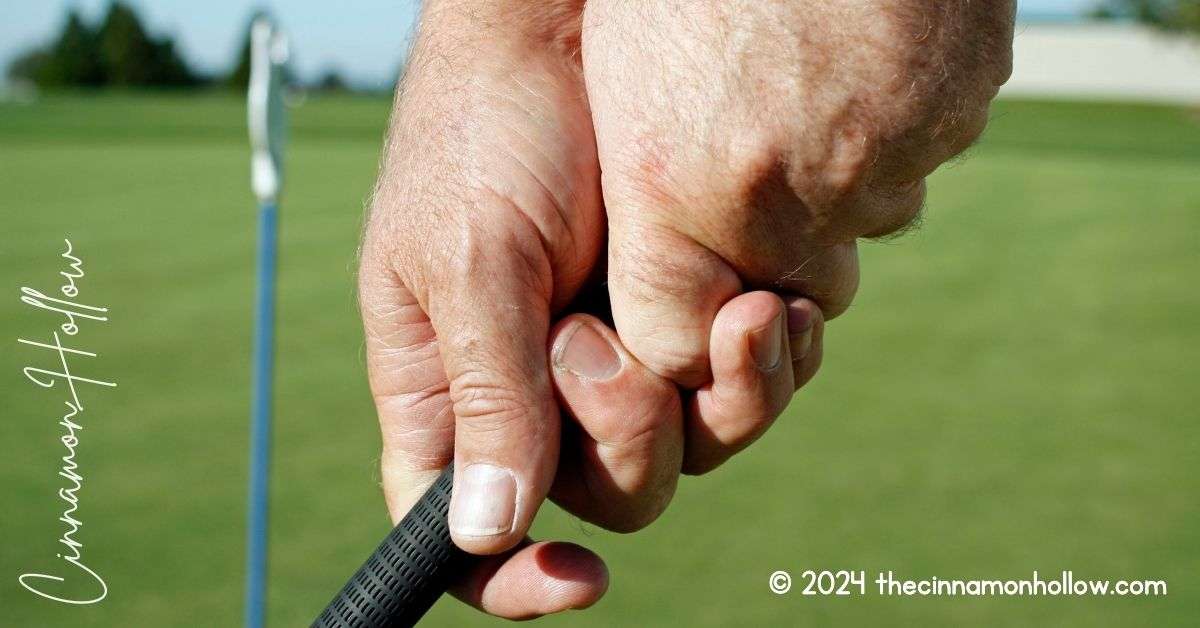Have you ever wondered why the way you hold your golf club is so important? Golf grips, or the way you hold your club, can make a difference in how you play. But there’s something else golfers often think about, which is hand injuries. Playing golf can sometimes hurt your hands or wrists.
In this article, we will find out if the way you grip your golf club has anything to do with these injuries. We’ll examine different types of grips, the kinds of hand injuries that golfers often get, and whether changing your grip can help you avoid injury.
So, if you love playing golf and want to keep your hands safe, keep reading to learn more about golf grips and hand injuries.
Understanding Golf Grips
What are Golf Grips?
Golf grips are the part of the golf club that you hold onto. When you play golf, how you hold the club can affect your swing and the direction the ball goes. There are several ways to hold a golf club, and each style is called a grip.
Types of Golf Grips
- Overlapping Grip: This grip is popular among professional golfers. You place the pinkie finger of your trailing hand between the index and middle finger of your leading hand.
- Interlocking Grip: This grip is suitable for people with smaller hands. You lock the pinkie finger of your trailing hand with the index finger of your leading hand.
- Baseball Grip: Also known as the ten-finger grip, this grip allows you to hold the club like a baseball bat. It’s often recommended for beginners because it’s easy to learn.
Role in Performance
The type of grip you choose can change how you swing the club and how well you control the golf ball. Some grips might help you hit the ball harder, while others could give you better accuracy. It’s all about finding which grip feels best for you and enables you to play your best game.
Overview of Common Hand Injuries in Golf
Types of Hand Injuries
Golfers can face a few different hand injuries, including:
- Tendinitis: This is when the tendons in your hand or wrist get irritated from doing the same movements over and over.
- Sprains: These happen when the ligaments in your hands or wrists get stretched too much or tear.
- Arthritis: This can happen from a lot of wear and tear on your joints, making them swollen, stiff, and painful.
Causes of Injuries
Most hand injuries in golf result from how you move when you swing the club. If your grip is too tight or if you swing too hard, you might hurt yourself. Also, using the wrong grip for your hand size or strength can put extra stress on your hands and wrists.
The Connection Between Golf Grips and Hand Injuries
Sports therapists and professional golfers often discuss the link between golf grips and hand injuries. They agree that while no single grip is guaranteed to cause or prevent an injury, certain grips may be better suited to individual players based on their physical characteristics and how much golf they play. Experts suggest that getting a professional assessment of your grip technique can significantly reduce the risk of injury.
Preventive Measures and Best Practices
Choosing the Right Grip
The best grip for you depends on several factors, including hand size, strength, and any existing injuries. Here are some tips on selecting a grip:
- Consult a Professional: A golf coach or sports therapist can help you choose a grip that minimizes strain on your hands.
- Experiment: Try different grips on the driving range to see which feels most comfortable and effective.
Techniques for Safe Play
Using the proper grip is just one part of playing safely. Here are other techniques to help you avoid hand injuries:
- Warm Up Properly: Always stretch your hands, wrists, and arms before playing.
- Use the Right Equipment: Make sure your golf clubs are the right size and weight for you.
- Don’t Overdo It: Avoid playing too much, especially if you’re just starting or returning from an injury.
Hand Strengthening Exercises
Strong hands and wrists can also help prevent injuries. Here are a few exercises to try:
- Wrist Curls: Sit with your forearm on your thigh and a dumbbell in your hand, palm up. Curl the wrist upwards, hold, then lower slowly.
- Finger Squeezes: Squeeze a softball in your hand, hold it for a few seconds, and release.
- Thumb Extensions: Place a rubber band around your fingers and thumb, then extend the thumb outward against the resistance.
Conclusion
While there’s no definitive answer that one particular grip will prevent all hand injuries, understanding the connection between your golf grip and hand health can help you make better choices. By choosing the proper grip, warming up properly, and strengthening your hands, you can enjoy a safer and potentially more effective golf game.
Remember, if you’re experiencing pain or discomfort, it might be time to reevaluate your grip and consult with a professional. Keeping these tips in mind can help you maintain both your health and your love for the game of golf.
We are not doctors and this is in no way intended to be used as medical advice and we cannot be held responsible for your results. As with any product, service or supplement, use at your own risk. Always do your own research before using.


